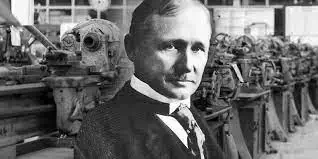
Modern supply chain management has very little patience for anything that does not contribute to productivity and efficiency. In achieving these, few methods have had more impact than the time and motion study pioneered by Frederick Taylor.
Fredrick Taylor could identify inefficiencies by breaking down complex operations into the smallest components possible. He then developed strategies to tackle the inefficiencies and improve productivity.
Introduction to Time and Motion
This groundbreaking technology, developed by Frederick Taylor in the early 20th century, transformed how work and management processes are streamlined and optimized. Taylor’s method focused on reducing wasted time and effort by objectively examining each motion and activity involved in an operation.
Fredrick Taylor could identify inefficiencies by breaking down complex operations into the smallest components possible. He then developed strategies to tackle the inefficiencies and improve productivity. This method transformed industries in his time and laid the foundation for modern supply chain management practices.
An Overview of Frederick Taylor’s Background and History
Frederick Taylor, AKA “the Father of Scientific Management,” was an engineer and management consultant who lived from 1856 and 1915. Born into an affluent family, Taylor was always interested in efficiency and production. He was totally convinced there was a better method to handle work and management processes, and he set out to prove it through research and experimentation.
Taylor began his career in steel mills, witnessing firsthand the inefficiencies and waste that plagued industrial operations. Determined to discover a solution, he began researching labourers’ work patterns and techniques, methodically charting their movements and timing their completed activities. This was the start of what would later be known as the Time and Motion Study.
What is the Time and Motion Study?
The Time and Motion Study is a method for analyzing work processes and identifying areas of improvement. It entails breaking down a work activity or operation into more simplified, individual tasks and measuring how long it takes to complete each. With this study, Taylor attempted to reduce unnecessary work-process movements and streamline operations by carefully watching and timing each motion.
The Time and Motion Study is based on the premise that any work can be broken down into its smallest components, and by improving the efficiency of each component, overall productivity may be considerably boosted. Taylor felt that there was always “one best way” to accomplish a task, and it was the responsibility of management to select and implement that approach.
The Principles of Time and Motion
The Time and Motion Study is based on several key principles that guide its implementation. These principles include:
1. Scientific analysis: It entails carefully observing and measuring each task in the operation to identify inefficiencies and areas for improvement.
2. Standardization: It goes beyond identifying the most efficient task performance. Organizations need to standardize it to ensure consistency.
3. Training and education: Workers need the necessary skills and knowledge to improve productivity and reduce errors. The organization can help equip them with these.
4. Continuous improvement: Time and motion is not a one-time exercise. It is a continuous process of improvement and refinement.
The benefits of implementing the Time and Motion Study
Implementing the Time and Motion Study can yield numerous benefits for organizations. Some of the key benefits include:
1. Increased productivity
2. Cost savings
3. Standardization and consistency
4. Employee engagement and satisfaction
5. Quality Improvement
Criticisms and controversies surrounding the Time and Motion Study
While the Time and Motion Study has been widely praised for its ability to improve productivity and efficiency, it is not without its critics. Some of the criticisms and controversies surrounding the Time and Motion Study include:
1. Overemphasis on speed
2. Lack of consideration for human factors
3. Potential for worker exploitation
4. Limited applicability
The Impact of the Time and Motion Study on modern supply chain management practices
Despite the numerous criticisms and controversies, the Time and Motion Study has considerably impacted modern supply chain management methods. It established the field’s foundation and presented a methodical methodology for increasing productivity and efficiency.
Scientific analysis, standardization, and continuous improvement are among the Time and Motion principles incorporated into numerous supply chain management operations, including Lean Six Sigma and Total Quality Management.
These approaches have benefited supply chains worldwide by increasing productivity, quality, and customer happiness.
Conclusion
The Time and Motion Study by Frederick Taylor has left an indelible mark on productivity and efficiency. Taylor transformed the workplace by rigorously evaluating processes and discovering inefficiencies. Despite the criticisms, his concepts and tactics have endured and continue to influence modern management practices.

Obinabo Tochukwu Tabansi is a supply chain digital writer & ghostwriter helping professionals and business owners across Africa explore various strategies that work and learn from the success and failures of various supply chains across the globe. He also ghostwrites social content for logistics & supply chain businesses








